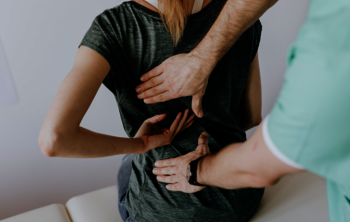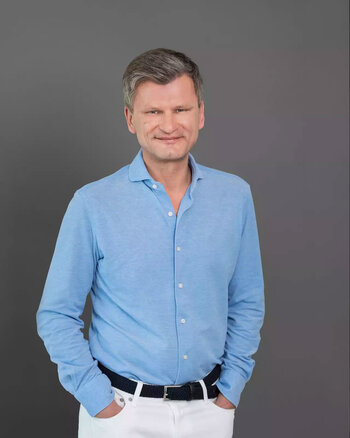Images alone do not adequately address complex back pain, as numerous factors such as medical history and lifestyle play a role. "We treat people, not images. Therefore, the most important diagnostic tool for us is still the conversation with the patients and taking the time for it," says Walter. Only then does multifactorial diagnosis take place to select the best possible form of therapy. And in the rarest of cases, this is surgery.
Link between back pain and psyche
Because pain perception is as individual as we are, the reliance on imaging in back medicine is devastating for conservative treatment of back pain, according to specialists at Marianowicz Medicine. "Someone who is happy experiences pain completely differently than someone plagued by sorrow. Therefore, it is important to consider the psychological situation and life circumstances in therapy, as well as the degenerative findings. Because the body generally adapts to pain-triggering factors. And a herniated disc typically heals on its own within six weeks. The important thing is to help patients through the acute pain phase well—or to permanently relieve chronic patients of pain, or to alleviate it to a degree that allows them to lead liberated lives again."
Multimodal pain therapy
A effective approach used for patients with severe pain in orthopedics at Marianowicz Medicine is multimodal pain therapy. On one hand, minimally invasive procedures are performed here as part of interventional pain therapy on an outpatient basis and under local anesthesia. "In comparison to surgeries, the complication rates here are significantly lower, and the body is not subjected to the stress of surgical intervention," says Walter. On the other hand, it considers the psychological aspect. "The spine is the link between the nervous system and our body. Therefore, stress and tension can trigger pain—and pain is always what reaches our mind. Therefore, the psychological component is just as important as the physical one. Multimodal pain therapy takes this into account." For this reason, relaxation techniques such as PMR (Progressive Muscle Relaxation), meditation, self-hypnosis, or biofeedback are used to support the patient holistically.
Individual therapy according to a step-by-step plan
For less severe pain, according to a step-by-step plan, gentler forms are used at Marianowicz Medicine—following the motto: "As little as possible, as much as necessary". Thus, in stage 1, physiotherapy, manual therapy, muscle strengthening therapy, or acupuncture can already help. In stage 2, painkillers are used, orally or intravenously, individually dosed. The third stage usually involves image-guided injections at the affected nerve site, also using autologous blood. In stage 4, interventional procedures are then applied, which are combined with psychological approaches in stage 5 as part of multimodal pain therapy. In stage 6, this is implemented in a hospital setting. Dr. Willibald Walter: "Only when these 6 stages are not sufficient does surgery really make sense, and while such cases do exist, they only account for about 10-20% of all cases of back pain."
Second opinion is important
If a patient is prescribed surgery, Marianowicz Medicine always recommends a second, independent opinion from another specialist. "The significance of disc surgeries should not be underestimated, in terms of both downtime and effectiveness. Up to 40% of those operated on continue to experience pain even after healing. This is referred to as Failed Back Surgery Syndrome. Often, such patients end up with us, and usually, we can successfully address them with our step-by-step treatment plan."
Prevention is better than cure
According to Marianowicz Medicine, it is crucial that people develop an awareness of a healthy back. Exercise and adequate movement, healthy nutrition, and regular check-ups, as well as in cancer prevention, are important. Dr. Walter: "We offer a kind of body check-up, where we examine the entire statics of the patient and thus detect postural problems and imbalances early on. This prevents back problems early on." Unfortunately, this now also affects the youngest. According to a study conducted at the center, over 50% already show posture-related back instability at school and could be tomorrow's back patients. "Therefore, we appeal to healthcare policy, to parents, and to young and old alike to pay attention to their backs. It literally carries us through life and is important for a healthy, fulfilling life."



